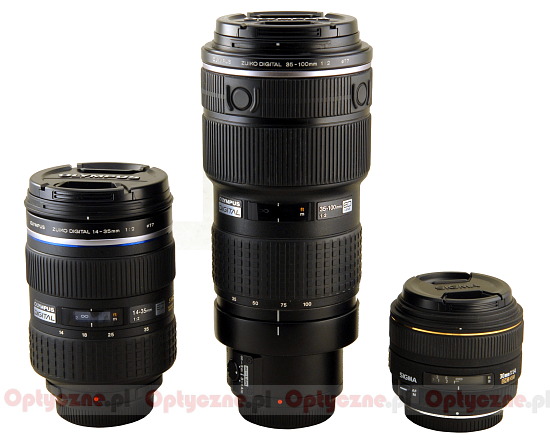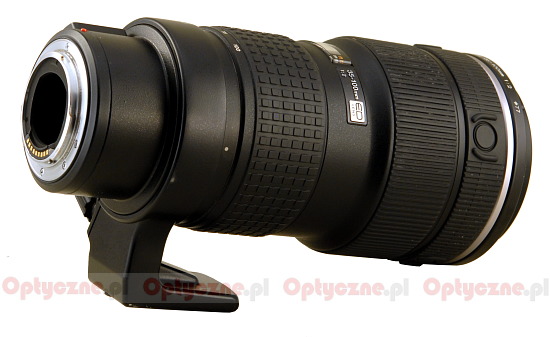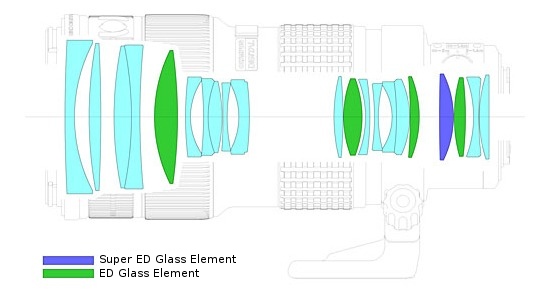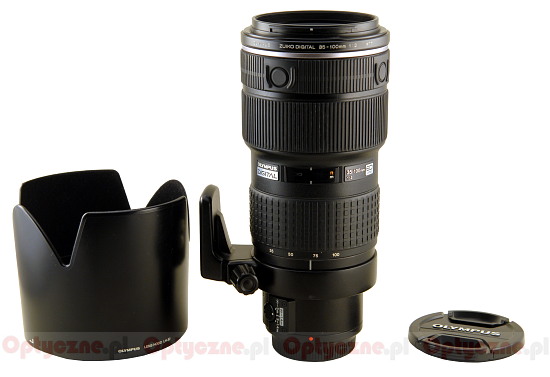Olympus Zuiko Digital 35-100 mm f/2.0
3. Build quality
You can see that the Olympus compares favourably with its competitors when it comes to one important factor – fastness. In the case of other devices we get the maximum aperture amounting to f/2.8 whereas that of the Olympus is f/2.0. We get exactly what we have been promised with the introduction of the small 4/3 format sensor so a lens with parameters similar to those of its competitors but significantly faster. I suppose everybody is aware what 1 EV more means. In order to be totally honest we have to add here, though, that the faster Olympus will still have a deeper depth of field than other 70-200 mm f/2.8 lenses designed for full frame because of its shorter focal lengths. As a result you will have more difficulty in obtaining a nice background blur for the 35-100 mm range.
 |
Please Support UsIf you enjoy our reviews and articles, and you want us to continue our work please, support our website by donating through PayPal. The funds are going to be used for paying our editorial team, renting servers, and equipping our testing studio; only that way we will be able to continue providing you interesting content for free. |
- - - - - - - - - - - - - - - - - - - - - - - - - - - - - - - - - - - - - - - - - - - - - - - -
What’s interesting the Olympus’s range of the focusing mechanism doesn’t impresses us much. The minimum focus is just 1.4 meters when the new Canon focuses already from 1.2 m and the Tamron and the Sigma – from 0.95-1 meter.
Although the Olympus is faster, it doesn’t stand out from its competitors when it comes to the dimensions. It is a bit larger and it weighs a bit more but fortunately these differences aren’t significant. The lens is undeniably heavy as the muscles of our arms will find out only too quickly during any longer shooting session.
The build quality of the tested lens is difficult to fault. As it befits a professional journalistic instrument it is completely weather-sealed; focusing and zooming are performed by inner elements’ movement only so the lens doesn’t change its parameters. During zooming, though, we can notice the rear lens element movements - it is the closest to the sensor at the end of focal lengths range and the furthest near 70 mm focal length.
 |
The lens starts with a metal bayonet mount. Right behind it we find a focus limiter which allows us to work in the following ranges: 1.4-3 meters, 1.4 meters- infinity and 3 meters- infinity. Next there is a flat ring used to attach a tripod adapter, included in box (very solid by the way). Even further we see a wide and ribbed zoom ring. It is well-damped and moves smoothly although in the resting position we found it a bit too loose – you can notice some lateral “play” and it is possible to change the focal length minimally moving it sideways.
The next element on the housing is a clear distance scale behind a window with markings in both feet and meters. On its one side there is an Olympus Digital logo and on the other side – the lens’s parameters. Above we’ll see a wide and comfortable manual focus ring. As it is often the case with Olympus lenses, in order to change the focus the device must be attached to the body and the body itself – switched on. Focusing is performed using a transmission motor so we are able to hear a delicate whirr when we turn the ring. The transmission is adjusted in such a way that even a significant turn makes the scale move only slightly (running through the whole scale from 1.4 meters to infinity takes a 500-degree turn!) so even very precise settings are possible.
Further on we see another ribbed ring on which there are four focus limiter switches every 90 degrees each. Right behind there is only a large front element surrounded by a 77 mm non-rotating filter thread.
Let’s get down to the description of the tested lens’s optical construction. An appropriate diagram can be found below.
 |
As you see this instrument is very complex indeed, consisting of as many as 21 elements in 18 groups. It is worth noticing that four elements were made of low-dispersion ED glass and one – of Super ED glass. Inside the lens we’ll find a circular aperture with nine diaphragm blades which can be closed down to f/22. The lens cooperates with converters multiplying the focal length by 1.4 and 2.0x.
The buyer gets both caps, a petal- type lens hood, a tripod adapter and a case included in box.
 |






